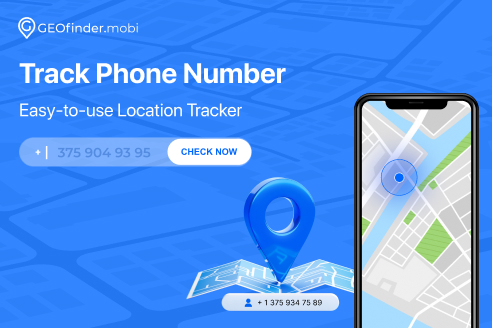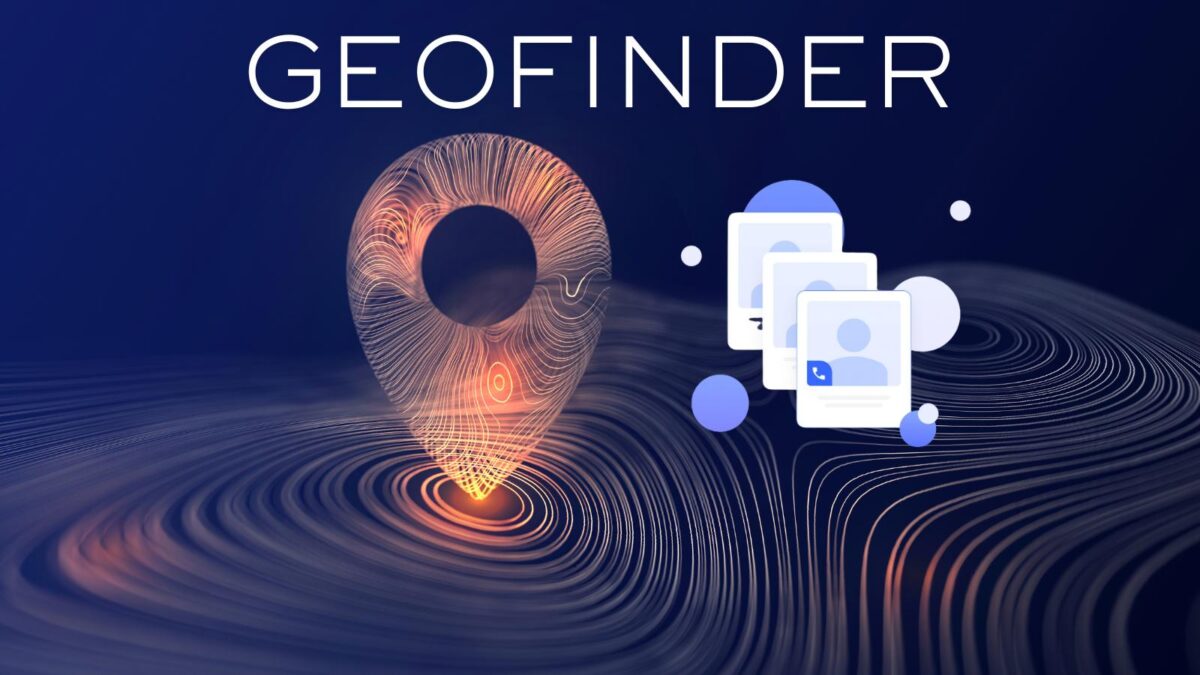Did you know GPS started as a warfare invention, as in many other similar cases, including the Internet itself? It is run by a complex satellite system that calculates the precise latitude and longitude of any given GPS module. And it’s a feature that is becoming more and more used in various types of location tracking apps for purposes of convenience and personalization.
Here we’ll try to explore how location-based apps can revolutionize your business and see examples of how it already did it.
We’ll focus on showing how geolocation enabled some well-known location tracking apps like Uber and Tinder to change the world in many ways.
Then, you’ll see how to do it yourself. Not only that but it can help you find your phone when it gets lost.
Table of Contents
Location Tracking App Feature
Global Positioning Service, or GPS, is a satellite system that determines the location of the GPS module, a sensor that can receive satellite signals.
The Internet connection makes these signals stronger. You can see the GPS logo below.
According to various statistics, the location-based apps market has at least $25 billion, and it continues to grow at several billion per year. While location features still cause some untrustworthiness among people due to the data storing and collection, their usage grows steadily due to their convenience and privacy improvements.
Types and Examples of Location Apps
So, let’s see how several well-known apps implement this feature!
Uber: Riding Everywhere You Need With Location Sharing App
A famous taxi service has revolutionized the cab industry, reducing its prices and increasing convenience. Before that, taxi drivers were obliged to search for potential clients by themselves, using specialized companies or staying close to crowded places, such as airports.
Now, however, taxi drivers can obtain orders in real time via the Uber interface with this location sharing app.
Meanwhile, it analyzes how many orders are here and which is the best route to the client and then to their destination. It uses various variables such as the client-driver proximity, traffic conditions, and estimated time of arrival (ETA), to make the best match.
Uber also has features such as driver and customer reviews, ensuring safety and growing trust between them.
All such features enable drivers to minimize their downtime and gasoline expenses, reducing prices. They are reduced even more, actually, as Uber analyzes when there are more or fewer orders in the area, so more or fewer drivers are necessary.
Such a flexible approach ensures cost-efficiency. That’s how location-based app features and data analytics make taxing more convenient and less expensive.
Tinder: GPS-Powered Romantic Liaisons
This legendary dating app has much, much more influence than you can ever believe. More than one million marriages worldwide are conducted yearly due to the Tinder match!
While it certainly may be dangerous in some cases, it can be mitigated by simple precautionary measures. The app’s power is in the ability to connect loving hearts together even before they know each other. And the geolocation feature is crucial here.
See below how it proceeds.
Source: TechCrunch
Similar to driver-customer matching in Uber, Tinder matches couples based on their common interests, desires, and views. Here, however, matches aren’t usually automatic.
Specific Areas
People in a certain area can swipe each other to select those who fit them best, and a mutual match starts a conversation. Then, you can meet with your match, speak a bit more, and maybe have some continuation of your liaison… and then, who knows, have one of those one million marriages?
Anyway, Tinder shows how location-based app features can bring people together, helping them to be closer and find their love.
Foursquare: The Power of Places and People
This is a mapping app, but it’s more specialized than Google Maps or similar examples. It works similarly to social networking sites, where users add businesses and locations to the map, review them, and communicate about them. See the screenshot below.
Image Source: UISources
People use the app to find various places they need and communicate with other users about it. It has more than 1 billion user check-ins each year, so its user and content bases are quite large.
The sharing location app revolutionizes communication about real-world places, enabling users to save them and give their advice regarding them.
Pokemon Go: Hunting Pokémon’s in AR With Location Tracking App!
It’s a very revolutionary game in its approach, as it was one of the first AR-based games that uses location-based features to make the user play in the real world. It creates a virtual reality based on the user’s geolocation maps around them and places Pokemons there.
So, users should hunt them with PokeBalls when they’re walking. See a screenshot below to see what it looks like.
Source: A YouTube Video
The game has many other location-based app features, too. For example, certain real-world landmarks and locations are designated as PokeStops and Gyms, using GPS.
Usually, there are monuments, historical sites, or public buildings. Players must travel to these locations physically to interact with them in the game’s augmented reality. PokeStops provides items and resources, while Gyms serve as battle arenas.
As players move through their real-world surroundings, the game uses GPS to trigger random encounters with wild Pokemon. To be in range, a player must come to the creature closer to the real world.
Eventually, they use their smartphone’s camera to see the Pokémon in augmented reality and try to catch it by throwing a virtual PokeBall.
Curbside: Order and Pick Everything
This location sharing app’s primary functionality revolves around placing orders for items from nearby stores and picking them up conveniently without ever leaving their vehicles. Curbside utilizes location-based technology to do that.
When users open the app, it uses their device’s GPS to see nearby partner stores that offer the service. Users can browse through a list of available retailers based on their proximity, and then pick the available products.
Using location-based navigation features, Curbside shows directions to the selected store. It ensures that users can easily reach their destination without getting lost.
Then, the location app notifies store employees when the user arrives, so they prepare the order and bring it directly to the user’s vehicle.
So, Curbside optimizes the shopping process, offering users a convenient, time-saving, and contactless way to purchase items and pick them up at their local stores.
Any ideas? A Generic Guide
Location-based apps are too different to place everything about their creation in a single guide. So, we called it “generic” intentionally, implying that it’s just a model for creating such location sharing apps.
- Develop your app concept. What will you build and how will it change the world and humanity? Conduct market research to understand whether your app will be accepted well.
- Find the location tracking app features that will fit your concept. Will it match people based on some criteria? Or use maps to highlight some places? Or do you want to play with augmented reality? Probably, your users will be able to make shopping or find something in their location more easily. Develop these concepts and intertwine them in your app. This part will ensure that you’ll develop a robust location-based app.
- Choose location data sources and APIs to integrate them into your location sharing app. For example, use Google Maps or other providers, or develop your own service. Or use a concept map to highlight some places
- Design the app’s interface to ensure that your users will be happy using geo services.
- Develop robust safety measures to ensure that location data will never be breached.
- Develop the app’s functionalities, backend, and databases to create a working product.
- Test the product and launch it on the market.
- Conduct regular assessments, collect feedback, and issue updates.
Combining Ideas
Again, it’s just an idea. Think about how you can combine geolocation app features
Again, it’s just an idea. Think about how you can combine geolocation app features to revolutionize some aspects of the world. Then create your own development plan based on the one above.
Conclusion of Location Tracking App
Location-based apps can drastically improve the whole industry where they’re applied, as they connect the real and virtual world and enable people to orient in it.
Finding the right people and places, shopping with ease, and playing immersive games are only the most prominent examples.
So, combining the right features in a new concept can be very beneficial for the business working with it. Don’t get left behind without this technology.
Location-Based Apps: FAQ for Small Businesses and Families
Location-based apps use your device’s GPS or Wi-Fi to offer services or features based on where you are. Examples include store finders, delivery tracking, or local promotions.
They can bring in nearby customers, promote flash sales, guide people to your store, and track foot traffic. Some apps even offer automated check-in rewards or push notifications to boost engagement.
Setup costs depend on what you need. Simple apps that show your business location or send offers can be affordable. Custom features, like loyalty programs or live navigation, cost more but may pay off with higher sales.
Yes. They let people find stores, view wait times, order ahead, and get personalized offers. Fast, relevant service keeps people coming back.
Most apps let you control privacy settings. You can limit who sees your location or turn tracking off. Always use trusted apps and read privacy policies before allowing access.
Absolutely. Mobile vendors, food trucks, and pop-up shops use these apps to share current locations, specials, and event details with fans.
They can reach people searching nearby or passing by your area. Sending timely deals or alerts can turn walkers or drivers into new regulars.
Some users worry about sharing their location. You may need to explain how data is used and keep privacy options clear. Also, too many notifications can annoy people, so timing and value matter.
Start with your main goal. Need to get found? Try a map or store locator. Want to drive sales? Look for apps with promotion tools. For security or family needs, choose apps with strong privacy controls and easy settings.
Check out resources at Inspire To Thrive for guides, tips, and personal support. You can also reach out for a free consultation to talk about your business or family’s unique needs.
- How Does The X Algorithm Work & How To Adjust Yours In 2026 - January 7, 2026
- How to Edit Instagram Reels Like a Pro: A 2026 Guide - January 5, 2026
- How To Snooze Someone On Facebook In 2026 To Avoid Drama - January 3, 2026




